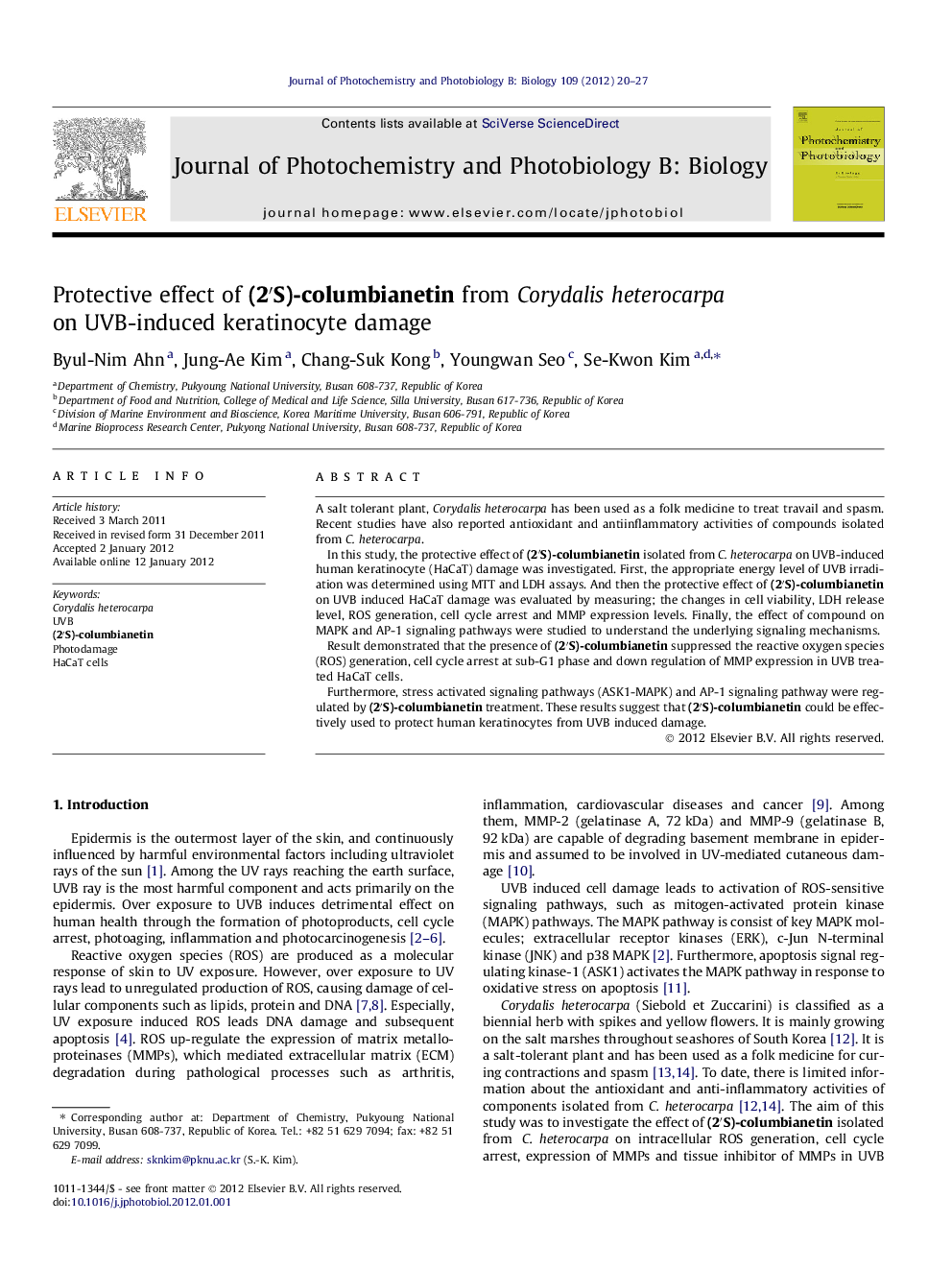| Article ID | Journal | Published Year | Pages | File Type |
|---|---|---|---|---|
| 30576 | Journal of Photochemistry and Photobiology B: Biology | 2012 | 8 Pages |
A salt tolerant plant, Corydalis heterocarpa has been used as a folk medicine to treat travail and spasm. Recent studies have also reported antioxidant and antiinflammatory activities of compounds isolated from C. heterocarpa.In this study, the protective effect of (2′S)-columbianetin isolated from C. heterocarpa on UVB-induced human keratinocyte (HaCaT) damage was investigated. First, the appropriate energy level of UVB irradiation was determined using MTT and LDH assays. And then the protective effect of (2′S)-columbianetin on UVB induced HaCaT damage was evaluated by measuring; the changes in cell viability, LDH release level, ROS generation, cell cycle arrest and MMP expression levels. Finally, the effect of compound on MAPK and AP-1 signaling pathways were studied to understand the underlying signaling mechanisms.Result demonstrated that the presence of (2′S)-columbianetin suppressed the reactive oxygen species (ROS) generation, cell cycle arrest at sub-G1 phase and down regulation of MMP expression in UVB treated HaCaT cells.Furthermore, stress activated signaling pathways (ASK1-MAPK) and AP-1 signaling pathway were regulated by (2′S)-columbianetin treatment. These results suggest that (2′S)-columbianetin could be effectively used to protect human keratinocytes from UVB induced damage.
► UVB cause cellular damage to Human keratinocyte (HaCaT) cells. ► (2′S)-columbianetin attenuates intracellular ROS, sub-G1 arrest and MMP production due to UVB exposure in HaCaT cells. ► (2′S)-columbianetin suppressed cellular damage through the ASK1-MAPK and AP-1 signaling pathway. ► (2′S)-columbianetin is an affective natural compound for preventing cellular damage induced by UVB exposure.
